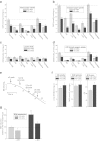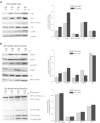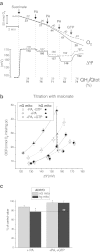The influence of high glucose on the aerobic metabolism of endothelial EA.hy926 cells
- PMID: 23053476
- PMCID: PMC3513600
- DOI: 10.1007/s00424-012-1156-1
The influence of high glucose on the aerobic metabolism of endothelial EA.hy926 cells
Abstract
The endothelium is considered to be relatively independent of the mitochondrial energy supply. The goals of this study were to examine mitochondrial respiratory functions in endothelial cells and isolated mitochondria and to assess the influence of chronic high glucose exposure on the aerobic metabolism of these cells. A procedure to isolate of bioenergetically active endothelial mitochondria was elaborated. Human umbilical vein endothelial cells (EA.hy926 line) were grown in medium containing either 5.5 or 25 mM glucose. The respiratory response to elevated glucose was observed in cells grown in 25 mM glucose for at least 6 days or longer. In EA.hy926 cells, growth in high glucose induced considerably lower mitochondrial respiration with glycolytic fuels, less pronounced with glutamine, and higher respiration with palmitate. The Crabtree effect was observed in both types of cells. High glucose conditions produced elevated levels of cellular Q10, increased ROS generation, increased hexokinase I, lactate dehydrogenase, acyl-CoA dehydrogenase, uncoupling protein 2 (UCP2), and superoxide dismutase 2 expression, and decreased E3-binding protein of pyruvate dehydrogenase expression. In isolated mitochondria, hyperglycaemia induced an increase in the oxidation of palmitoylcarnitine and glycerol-3-phosphate (lipid-derived fuels) and a decrease in the oxidation of pyruvate (a mitochondrial fuel); in addition, increased UCP2 activity was observed. Our results demonstrate that primarily glycolytic endothelial cells possess highly active mitochondria with a functioning energy-dissipating pathway (UCP2). High-glucose exposure induces a shift of the endothelial aerobic metabolism towards the oxidation of lipids and amino acids.
Figures





References
-
- Cui Y, Xu X, Bi H, Zhu Q, Wu J, Xia X, Ren Q, Ho PC. Expression modification of uncoupling proteins and MnSOD in retinal endothelial cells and pericytes induced by high glucose: the role of reactive oxygen species in diabetic retinopathy. Exp Eye Res. 2006;83:807–816. doi: 10.1016/j.exer.2006.03.024. - DOI - PubMed
Publication types
MeSH terms
Substances
LinkOut - more resources
Full Text Sources

